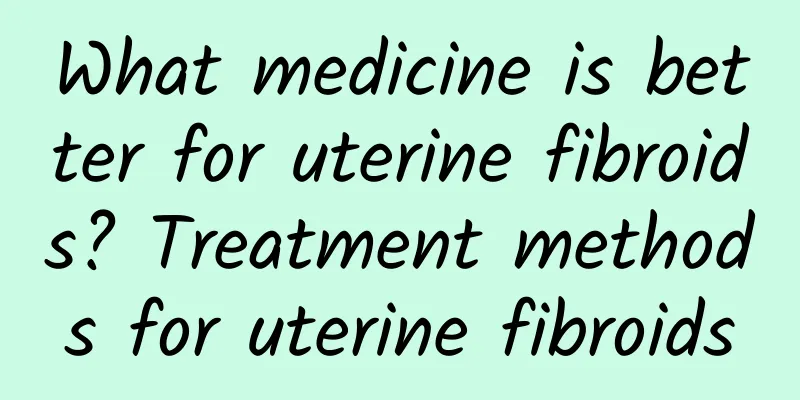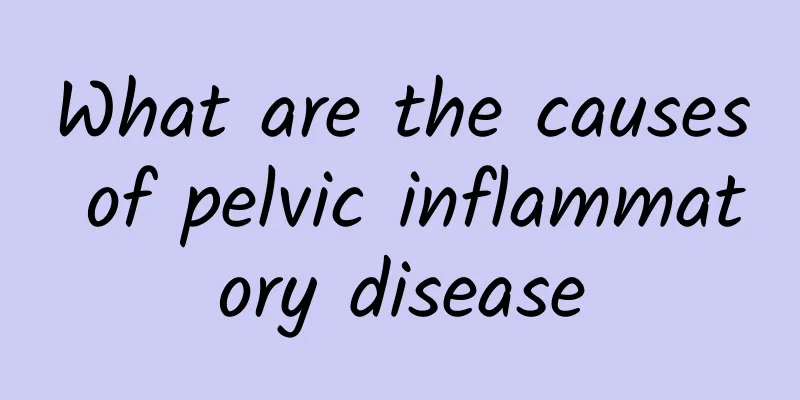What medicine is better for uterine fibroids? Treatment methods for uterine fibroids

|
Since uterine fibroids are related to estrogen, most drugs used to treat fibroids are related to lowering estrogen levels or antagonizing estrogen. Commonly used drugs include: Introduction to commonly used drugs for uterine fibroids 1. Gonadotropin-releasing hormone agonist (GnRHa) GnRHa can cause amenorrhea in most patients. Three months of treatment can reduce the volume of fibroids by about 35-65%, but within a few months after stopping the drug, the size of the fibroids will gradually return to the size before treatment. Therefore, its effect is temporary. It is mainly used for laparoscopic surgery or hysteroscopic surgery for large fibroids. 2. Aromatase inhibitors Aromatase inhibitors reduce estrogen production in the ovarian and peripheral tissues, lowering estrogen levels. These drugs work faster based on their mechanism of action, but with far fewer side effects than GnRH-like drugs. Aromatase inhibitors can reduce the size and symptoms of uterine fibroids. 3. Mifepristone Mifepristone's antiprogestin activity works on the higher-than-normal levels of progesterone receptors in uterine fibroids. Several studies have shown that high doses of mifepristone can reduce the size of fibroids by about 26-74%. Compared with the use of gonadotropin analogs, its effect is lower, and the recurrence rate of fibroids is lower after stopping mifepristone. With mifepristone, the amenorrhea rate can reach 90%, bone density remains stable, and pelvic compression is improved. Side effects of mifepristone include endometrial hyperplasia, endometrial cancer, and transient transaminases. Treatments for uterine fibroids 1. Drug diagnosis and treatment: For patients with severe conditions, drug diagnosis and treatment can only be a temporary treatment, not a permanent treatment, and cannot completely cure uterine fibroids. Since the drug contains hormones, long-term use will not improve the condition, so this method is still suitable for patients with milder conditions. 2. Surgical treatment: The surgical treatment method is to completely remove the fibroids in the uterus, so that the patient can recover quickly and reduce the harm of the disease to her health. However, surgical treatment can usually be performed for patients who do not have fertility requirements. 3. Minimally invasive surgery: It is usually laparoscopic treatment, which makes up for the deficiencies of traditional Chinese medicine and surgical treatment, and can enable patients to recover their health as soon as possible. The risk of surgical treatment is relatively reduced, because it is a minimally invasive surgery, the wound is very small, which can satisfy women's beauty psychology. |
<<: How to treat multiple uterine fibroids? What are the treatments for multiple uterine fibroids?
>>: How to treat uterine fibroids? Can uterine fibroids only be treated by surgery?
Recommend
What are submucosal uterine fibroids? What are the symptoms of submucosal uterine fibroids?
In recent years, uterine fibroids are a common gy...
What are the hazards of cervical erosion to pregnant women? How to regulate diet for pregnant women with cervical erosion
In life, cervical erosion is a common disease in ...
Carefully choose an abortion hospital to ensure abortion safety
Choosing a better abortion hospital is a protecti...
What is the best thing to eat on the first day after an abortion?
Abortion is a common gynecological surgery. A rea...
Proper exercise during menstruation can help prevent dysmenorrhea
I believe that many female friends have experienc...
What are the 4 symptoms of female ovarian cysts?
What are the symptoms of female ovarian cysts? 4 ...
Create perfect curves! Follow the Korean fitness coach and do these 3 fitness stretching exercises
You will regret it if you don’t do it! If you wan...
What is the nursing method for moderate cervical erosion?
Moderate cervical erosion is also a type of cervi...
What is the cause of ovarian cysts? Will ovarian cysts cause patients to have miscarriages?
Some ovarian cysts start out solid, grow bilatera...
Does uterine fibroids require surgery? How big is the uterine fibroid for surgery?
How good is it for women to have uterine fibroids...
What is the reason for excessive vaginal discharge during menopause? Women must pay more attention to body care
Women in menopause will have many symptoms, and l...
Eat at convenience stores every day and follow the dietitian's diet plan without gaining weight
Busy office workers are forced to eat like "...
What to do if pregnancy is complicated by uterine fibroids? How to deal with pregnancy complicated by uterine fibroids
Treatment of uterine fibroids in early pregnancy:...
Build a lean physique! Good sleep can easily boost your metabolism
Poor sleep is actually related to obesity? Yes! A...
The body temperature weight loss method works! Ariel Lin loses her baby fat
If you want to build a physique that is easy to l...









